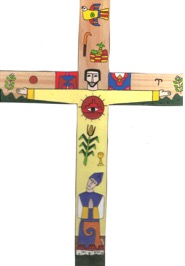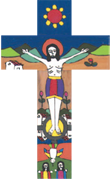The Romero Prayer

It helps, now and then, to step back and take the long view.
The Kingdom is not only beyond our efforts; it is even beyond our vision.
We accomplish in our lifetime only a fraction of the magnificent enterprise that is God’s work.
Nothing we do is complete, which is another way of saying that the kingdom always lies beyond us.
No statement says all that could be said. No prayer fully expresses our faith. No confession brings perfection. No pastoral visit brings wholeness. No program accomplishes the church’s mission. No set of goals and objectives includes everything.
This is what we are about.
We plant the seeds that one day will grow. We water the seeds already planted, knowing that they hold future promise. We lay foundations that will need further development. We provide yeast that produces effects far beyond our capabilities.
We cannot do everything and there is a sense of liberation in realizing that. This enables us to do something and to do it well. It may be incomplete, but it is a beginning, a step along the way, an opportunity for the Lord’s grace to enter and do the rest. We may never see the end results, but that is the difference between the master builder and the worker.
We are workers, not master builders; ministers, not messiahs.
We are prophets of a future not our own.
This prayer was composed by the late Bishop Ken Untener of Saginaw, drafted for a homily by Cardinal John Dearden in November 1979 for a celebration of departed priests. As a reflection on the anniversary of the martyrdom of Bishop Romero, Bishop Untener included in a reflection book a passage titled "The mystery of the Romero Prayer." The mystery is that the words of the prayer are commonly attributed to Oscar Romero, but they were never spoken by him. Pope Francis used the “magnificent” prayer in December 2015 in his Christmas address to the Roman Curia.
The confusion seems to have arisen from a major paper on Catholic education given by Westminster’s Cardinal Basil Hume on 6 January 1997 where he quoted the prayer but, for reasons it is now impossible to fathom, misattributed it to Archbishop Romero. His paper was subsequently published in a the ‘Briefing’ documentary service on 20 February 1997. The prayer was then picked up by Caritas Internationalis in Rome and CAFOD in London – both of whom included it (together with the misattribution to Archbishop Romero) in materials being used for their strategic planning processes in the run-up to the Millennium Jubilee. Thereafter the beautiful prayer went around the global Church and, not surprisingly, it became known as ‘The Romero Prayer’.


